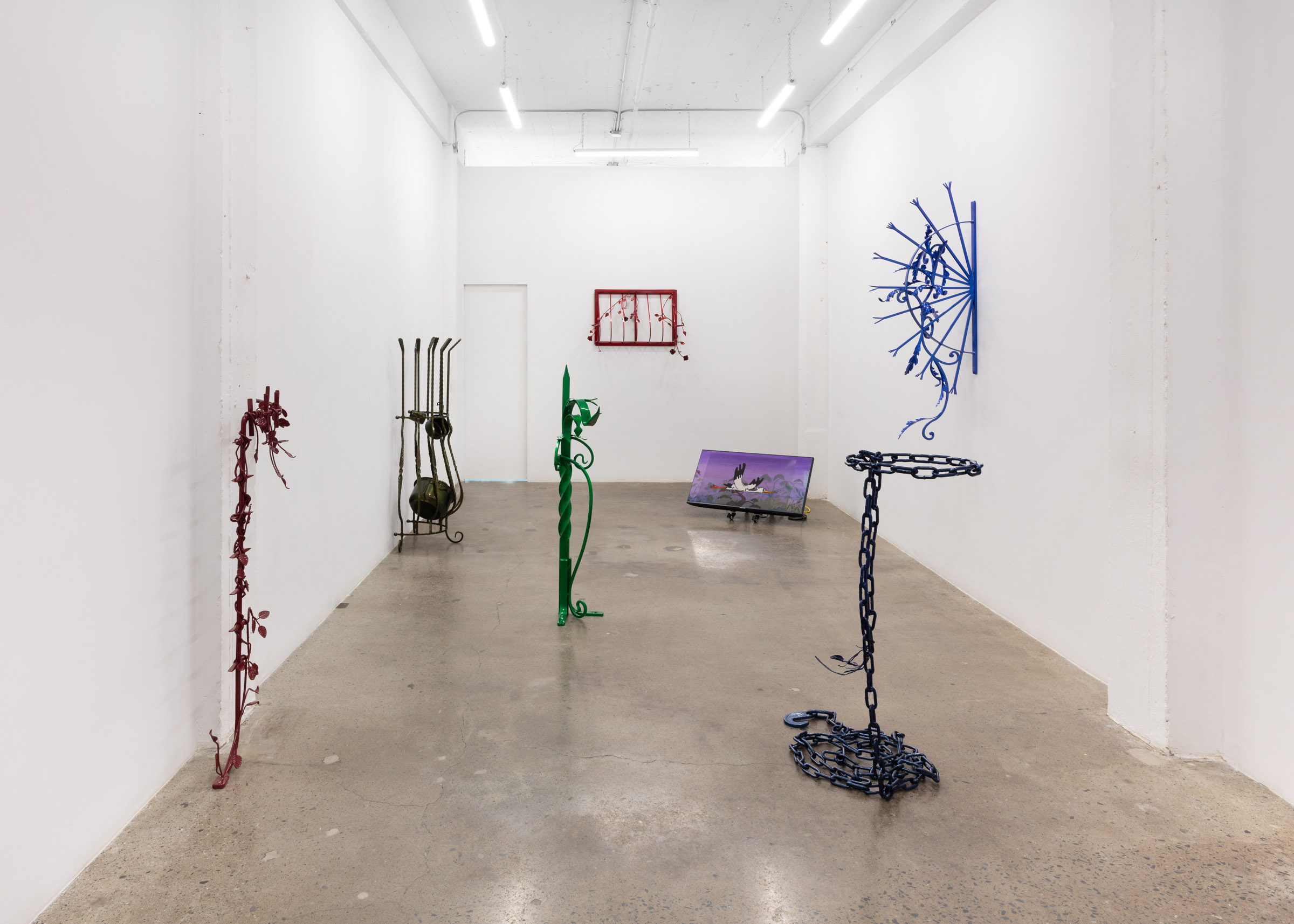
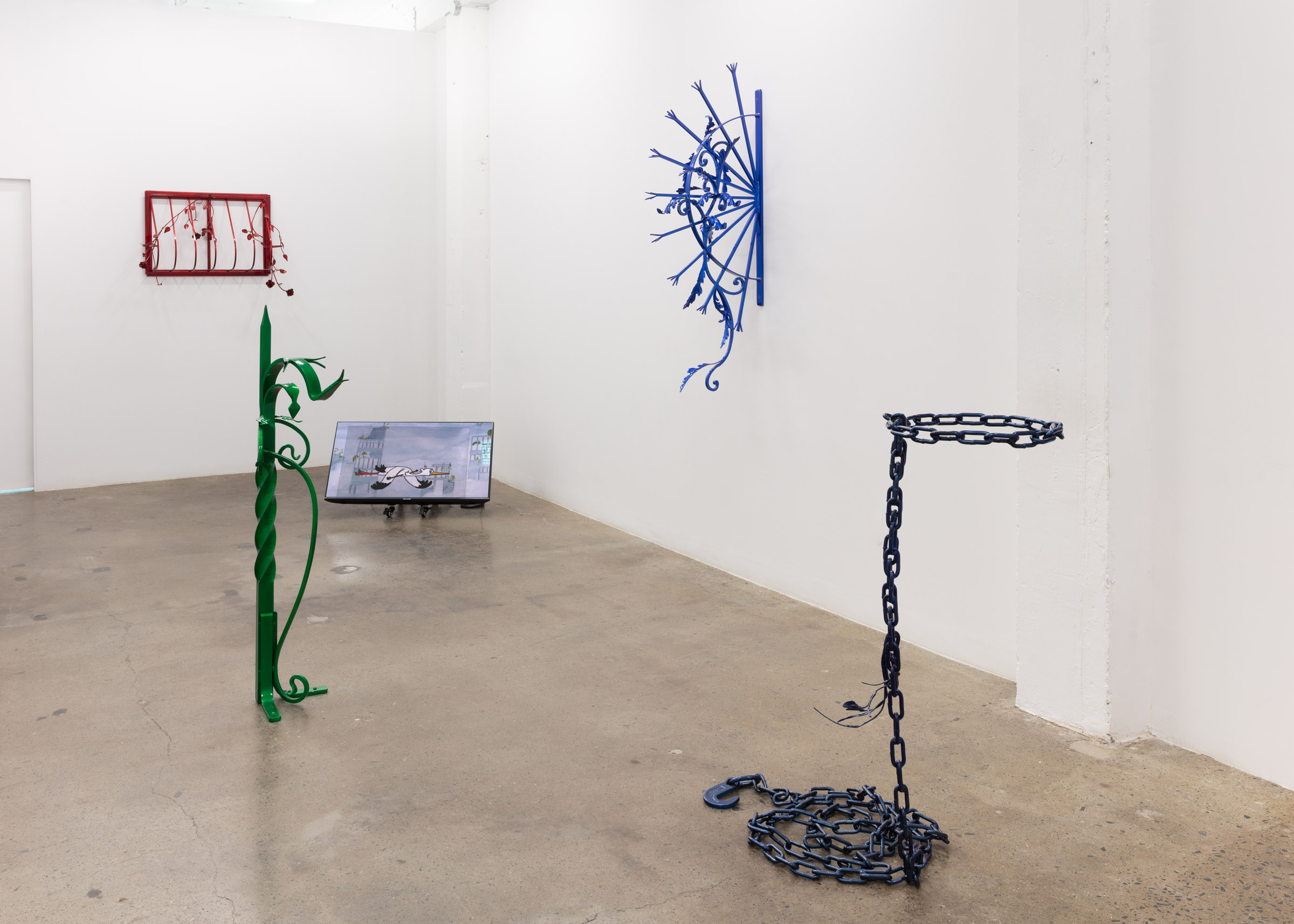
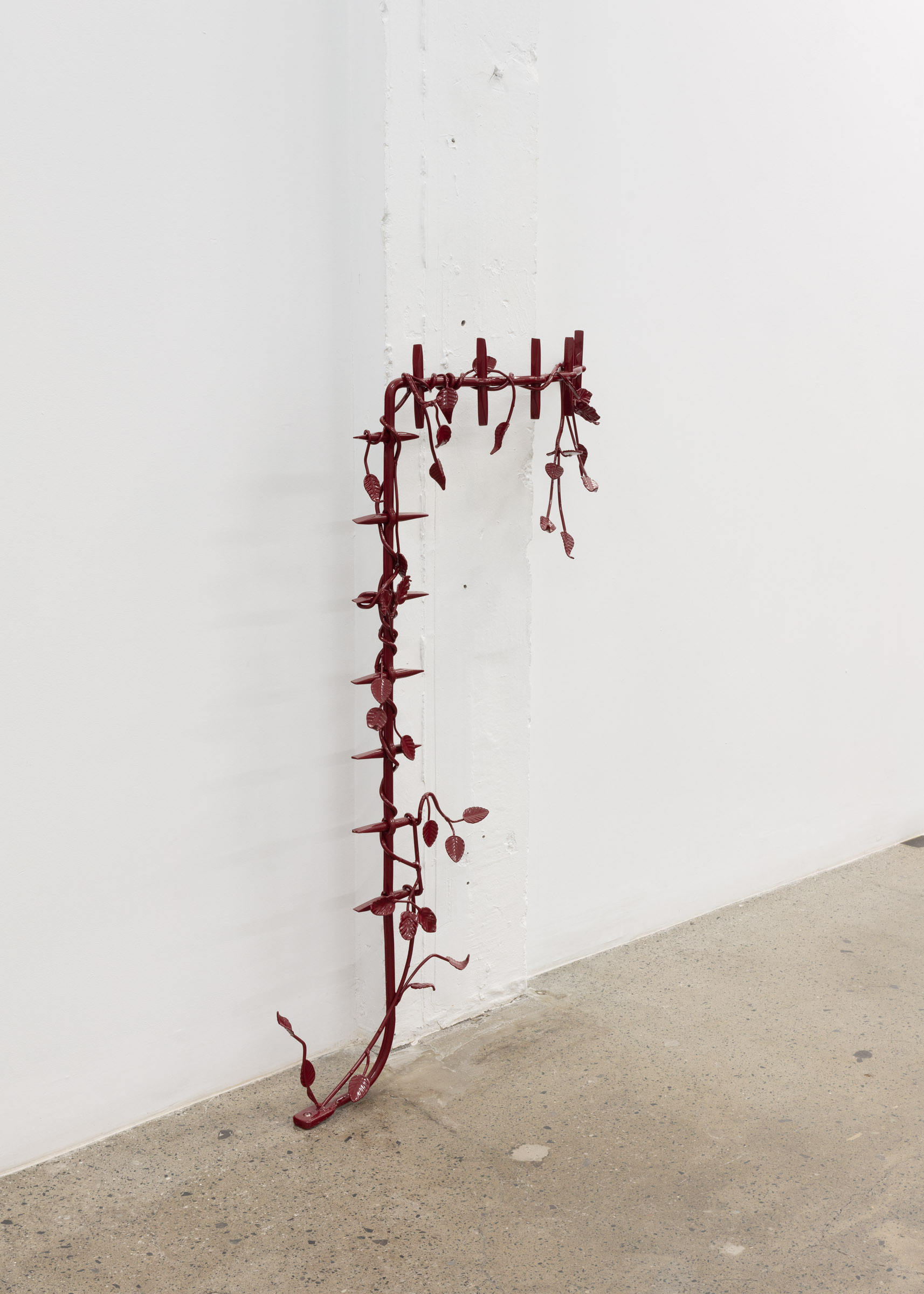

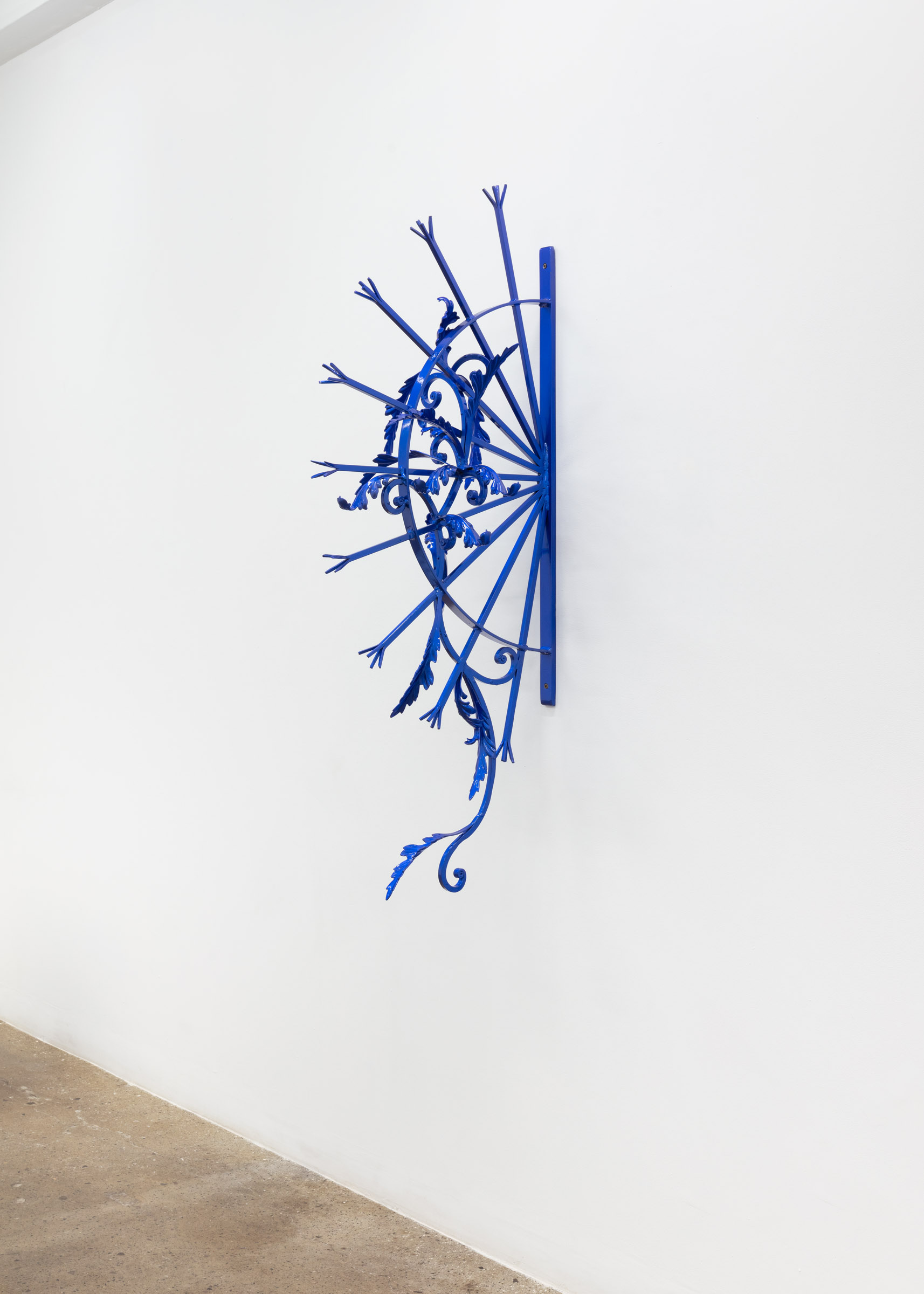
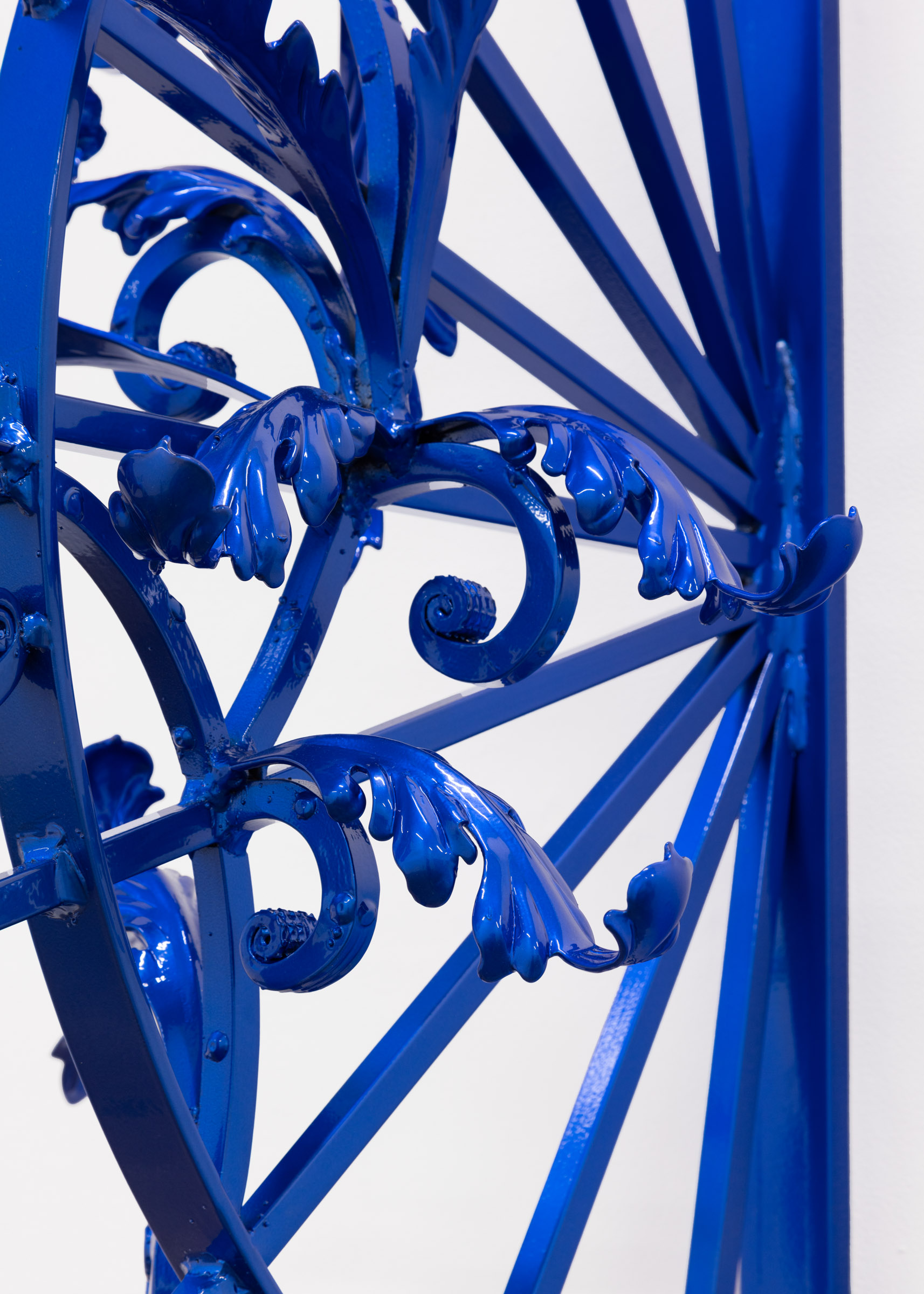


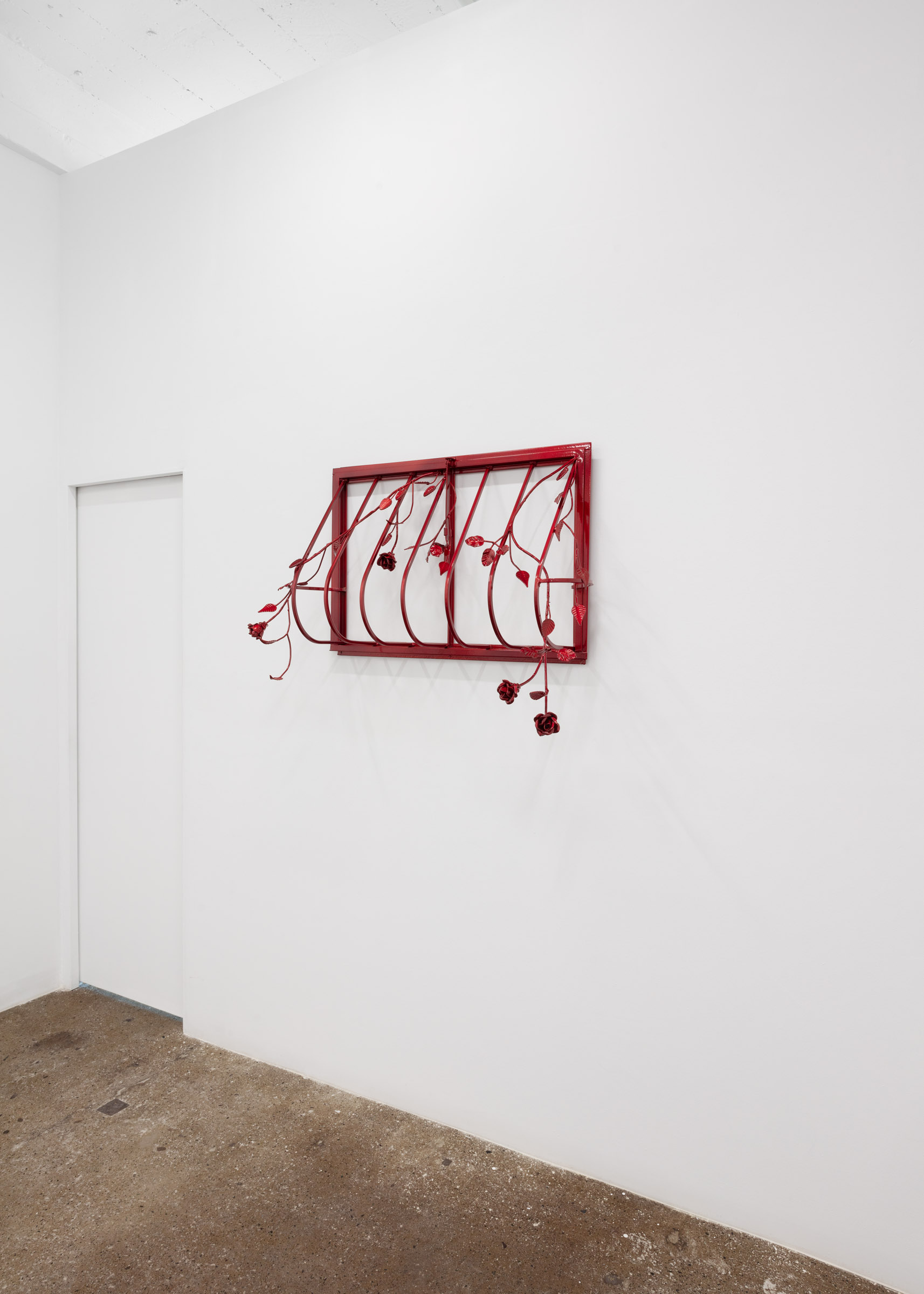


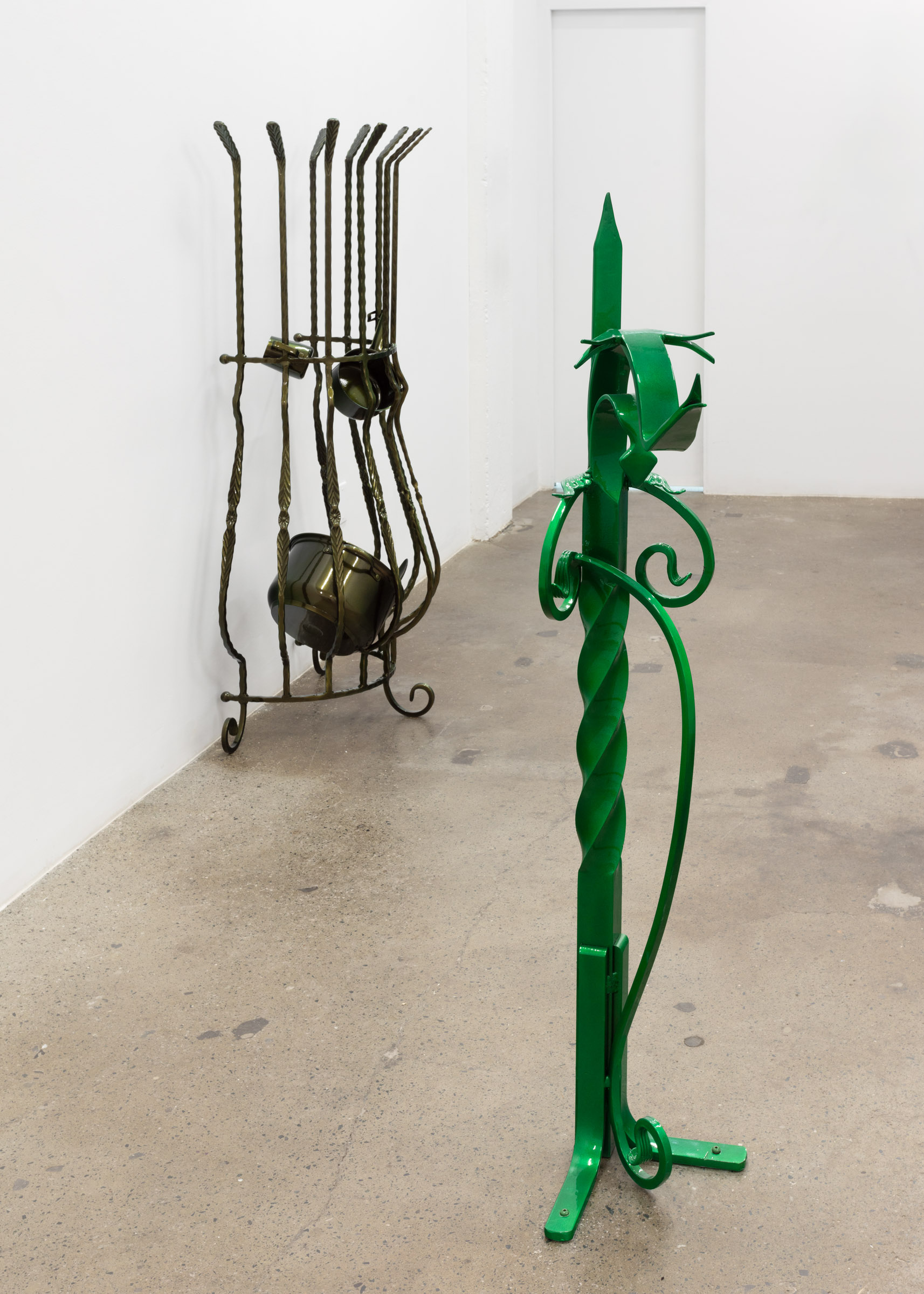
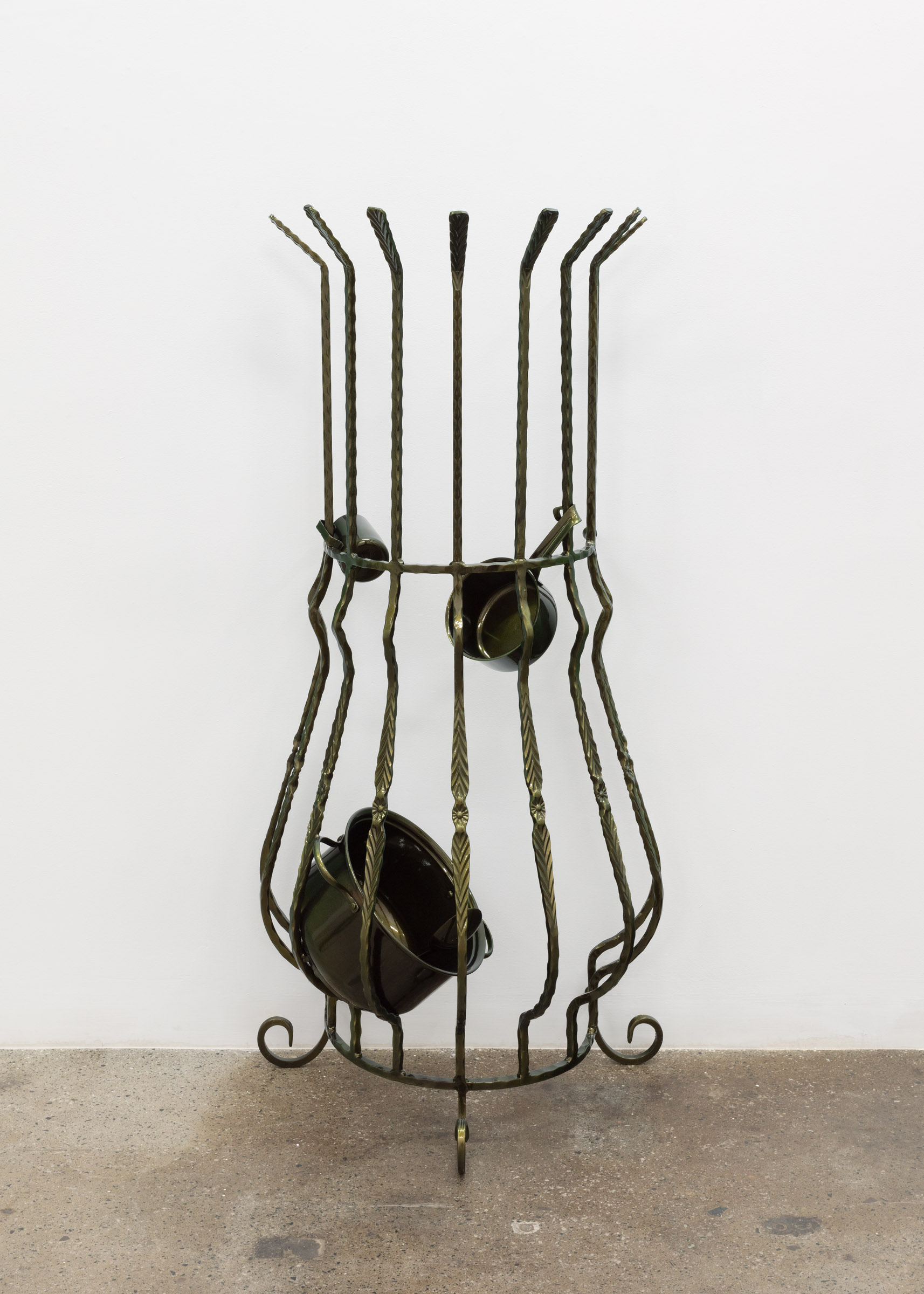
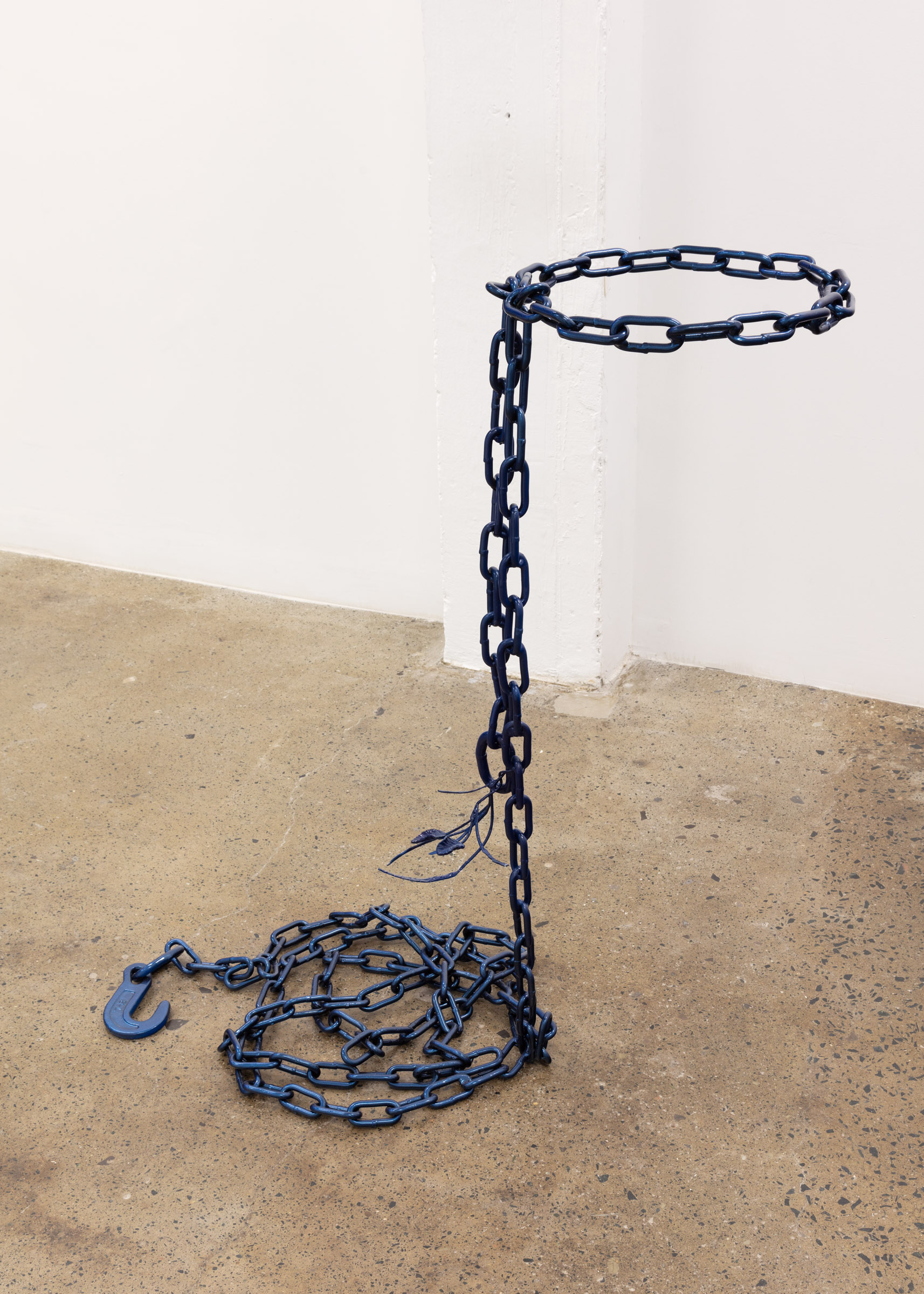
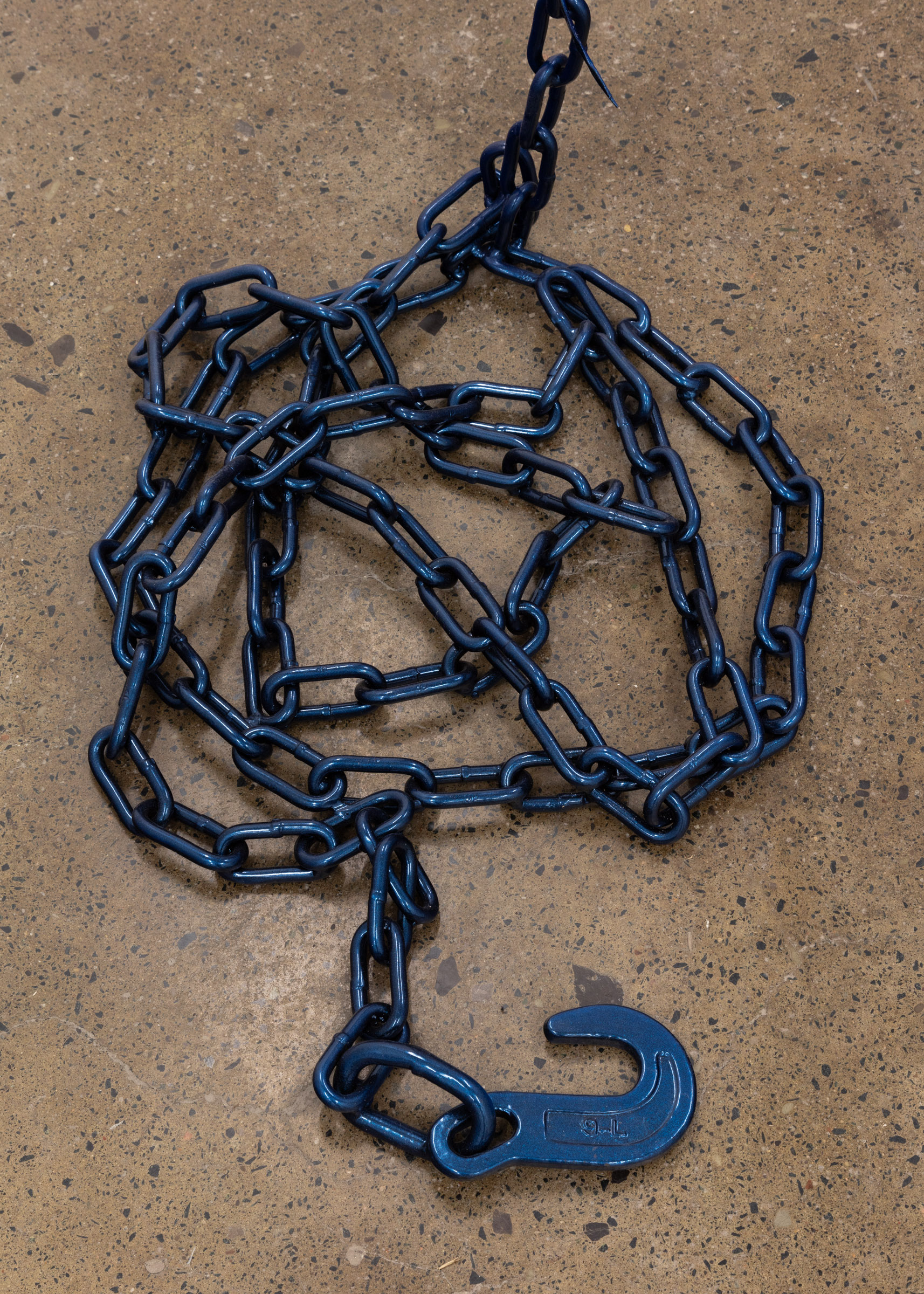
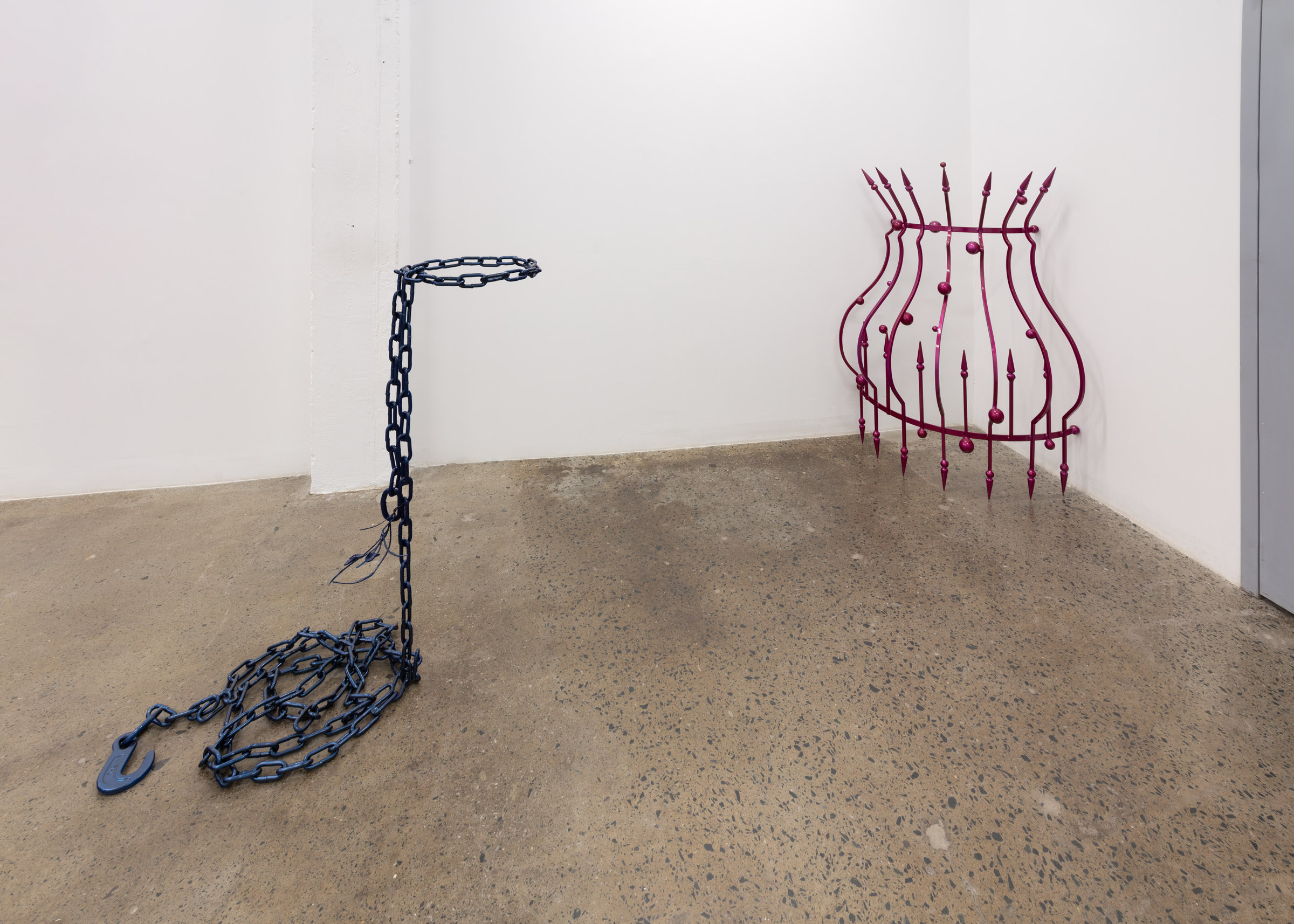



Tony Romano draws on familial traditions of carpentry and ironwork to create video, sculpture, and painting, often conceived as installations. His sculptural and filmmaking practice inform one another, developing a visual language and narrative structure that takes root in one and expands within the other. He transforms found objects and recycled materials into playful works that create new narrative possibilities from the materials themselves. For his solo exhibition The Big Hat, currently on view at Robert McLaughlin Gallery in Oshawa, Romano created a new series of sculptures and video that tell a cautionary tale of an imagined whirligig community reckoning with the arrival of a greedy professor who convinces them to trade their happy life for one of entrenched labour. Made from recycled, scrap, and raw metal, Romano imagines the whirligigs as autonomous beings with dreams and memories of their own.
Not Here, Not There is Romano’s first solo exhibition at Franz Kaka. It premieres the new video work The Arrow (2023), a hand-drawn cel animation that explores the arbitrariness of borders through the child-like pathos of a stork’s migratory journey across the globe with an arrow through its body. The video is presented with a series of metal sculptures that reference disciplinary architecture through the form of urine deflectors, specifically fabricated for the architecture of the gallery.
The Arrow builds on Romano’s long record of video and filmmaking in which reflexive techniques — wherein the making of the image is present in the final image itself — form both the structure and ethos of the work. Using multiple traditional techniques of animation, including stop-motion and drawn and painted cel animation, the images that comprise The Arrow are shown in various stages of completion. Sometimes, we see a “complete” image, other times, we see the early stages of a drawing outlined only in pencil, the edges of the table in Romano’s studio, or his hands entering the frame to reposition the image. The audio too is reflexive, as we hear the diegetic sounds of the story, an original soundtrack, and the extra-diegetic sounds from Romano’s studio as he lifts the animation table cover and repositions drawings printed on pieces of celluloid overtop watercolour backdrops.
Following in a tradition set out by filmmakers of the French New Wave, what this reflexivity in image-making allows is the ability to see the mechanisms by which authority is embedded into cultural narratives. Precedents for this can be found in Romano’s video work The Actor (2019), where green screen technology is laid bare to create dissonance with a narrative of Jesuit priests in 1600s Canada — the green screen becoming a poignant symbolic and material stand-in for the concept of the desired ‘clean slate’ of settler-colonialism.
Part of what makes Romano’s artistic output so compelling is how he enhances the characteristics and personality of the source material he works with, often transforming wood or metal into emotive, anthropomorphic actors. The sculptures in the exhibition reference ‘piss guards,’ architectural structures that are meant to deter public urination. Made out of metal and often ornamental in design, Romano has collected images of these objects on several trips to Italy. This series builds on Romano’s interest in objects of historical-material culture where the sacred collides with the profane. For instance, his recent series titled No Mercy, carved chairs based on misericords, medieval-era wooden shelves meant to support parishioners standing prayer, whose undersides were carved with imagery that was sometimes religious, sometimes vernacular, and sometimes lewd.
The sculptures in Not Here, Not There have an ominous quality, with defensive spikes, boils, and snares poised to protect property and ward off urinators. But they also have humour and romance to them, as red roses and vines have overgrown them, softening their harsh defences. Their charm is further avowed through their vibrant, powder-coated, pop colouring. In the artist’s words, the colours are meant to evoke an imaginary space (not unlike a green screen) — a surreal set or scene for animation. Playful, yet perverse, the sculptures contain a similar tension also found at the heart of the video.
The Arrow is based on the Pfeilstorch, a bird that was found in Germany in 1822 with a 30-inch arrow originating from Africa pierced through its torso. The bird was an important zoological case study in that it demonstrated that birds migrate rather than hibernate or change form during winter. The video’s style of children’s animation creates a cognitive dissonance with the moral of the story, which is one of tragedy and futility, beginning and ending at the hands of hunters who seek to and ultimately succeed in slaying the stork. Not Here, Not There tells a story of the poignant disregard for borders and the realization of shared environment.
— Kate Whiteway, 2024
Tony Romano (b. 1978, Toronto, CA) holds a BFA from the Emily Carr Institute of Art and Design and has exhibited his work widely both nationally and internationally, including in Canada, the United States, Austria, the United Kingdom, and Sweden. Recent solo exhibitions include The Big Hat, Robert McLaughlin Gallery, Oshawa; Night Thoughts, BEERS London; The Branch In The Salzburg Mine, Clint Roenisch Gallery, Toronto; The Last Act, Articule, Montreal; Onward Future, Oakville Galleries; Notary Moon, MacLaren Art Gallery, Barrie; and Oversea/Undersea, Kulturhust, Stockholm.
